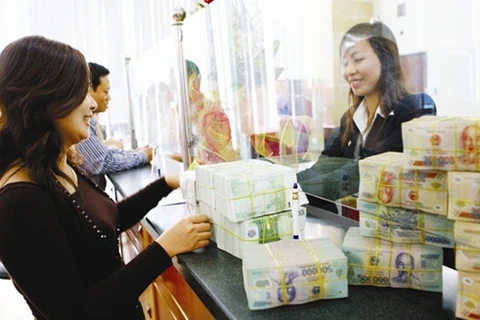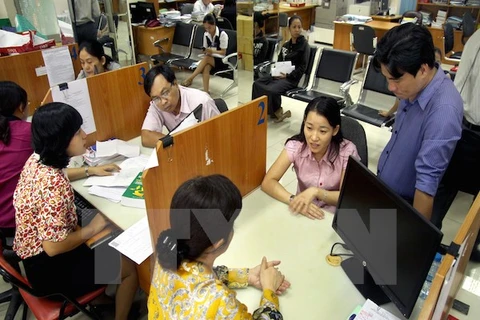Hanoi (VNA) - Consumer lending has the potential for explosive growth in Vietnam, but this can only happen with significant improvements in consumer satisfaction with credit institutions and loan conditions, experts say.
They say that tapping this growth potential will boost national spending and economic growth.
“Within the decade, market demand for unsecured loans has grown to adapt to the current financial scene in Vietnam, with an increasing amount of retail lenders and personal borrowers,” Hoang Van Hai, Director of the School of Business Administration (SBA), Vietnam National University of Economics and Business, said at a recent conference.
He said the growth can be attributed to favourable legal and socio-economic conditions that have fostered changes in income and spending habits.
At present, consumer loans in Vietnam range in value from 1 million VND to 60 million VND (44.6 USD to 2,680 USD). The application process and repayment schedule are fairly simple, and the rate of interest is reasonable at between1.49 percent to 1.6 percent per month, with the occasional zero percent for smaller loans.
In 2016, consumer credit was mostly used for purchasing household goods and travel expenses, with a focus on mobile devices, vehicles and personal computers under 2,000 USD. Sometimes, depending on the borrower’s credit history, capital is given directly (instead of paying purchase invoices).
Vietnamese consumers are reaching a spending over earnings ratio of 67 percent, and this is set to rise further as the economy picks up.
Hai said that Vietnam will soon reach a purchasing market worth about 15 billion USD per year, with 30 million people in the 20 to 59 age bracket.
This means more and more people in the middle income group are demanding capital to fund their immediate spending, without the hassle going through bank loans for smaller purchases.
Underdeveloped sector
However, the central bank sees current retail lending as underdeveloped, given the modest number of credit institutions giving out consumer loans as also the overall demand for such loans.
The central bank estimates that consumer loans account for just five to ten percent of total lending in the country, as opposed to the average 40 to 50 percent in developed nations.
Can Van Luc, a senior advisor to the Chairman of the Joint Stock Commercial Bank for Investment and Development of Vietnam (BIDV), said at an online conference in March that Vietnamese credit institutions granting consumer loans have a mere 1.78 billion USD in capital, about 0.7 percent of the credit sector’s total.
This is due to the fact that these institutions are not allowed to take deposits like commercial banks, having to rely instead on bonds.
The lack of capital, coupled with the reluctance among a majority of consumers to borrow, has lead to interest rates higher than the commercial banks’ average of 0.9 to 1.2 percent per month, said Luc.
However, consumer lending carries rich potential, especially among the population segment that does not qualify for bank loans. This segment can access this capital instead of being beholden to black market loans controlled by loan sharks.
While the central bank is positive about growth in this credit segment, there are still regulatory issues that need to be resolved.
In 2016, the SBV and the Ministry of Industry and Trade, received a large number of complaints from borrowers.
The Vietnam Competition Authority (VCA) released a report last year in which they detailed several major problems faced by consumers buying common household and electronic items.
A chief complaint from borrowers was that cumulative calculation of interest rates made the loan repayment untenable in just three to six months. They also said that the credit institutions did not show “decent conduct” while trying to recover loans.
The VCA advised consumers to have a clear understanding of the loan contracts before signing and reevaluate their own disposable income before taking out a loan, no matter how small.
Meanwhile, the SBV has simplified procedures and increased transparency for consumer loans through Circulars 39 and 43 issued in 2016 and 2017 respectively.
At present, the SBV considers a loan to be a consumer loan if it is made in Vietnamese dong, the borrower is an individual, not an institution, the purpose of the loan is to meet personal spending needs, and the total amount borrowed does not exceed 100 million VND (4,468 USD).-VNA
VNA
























